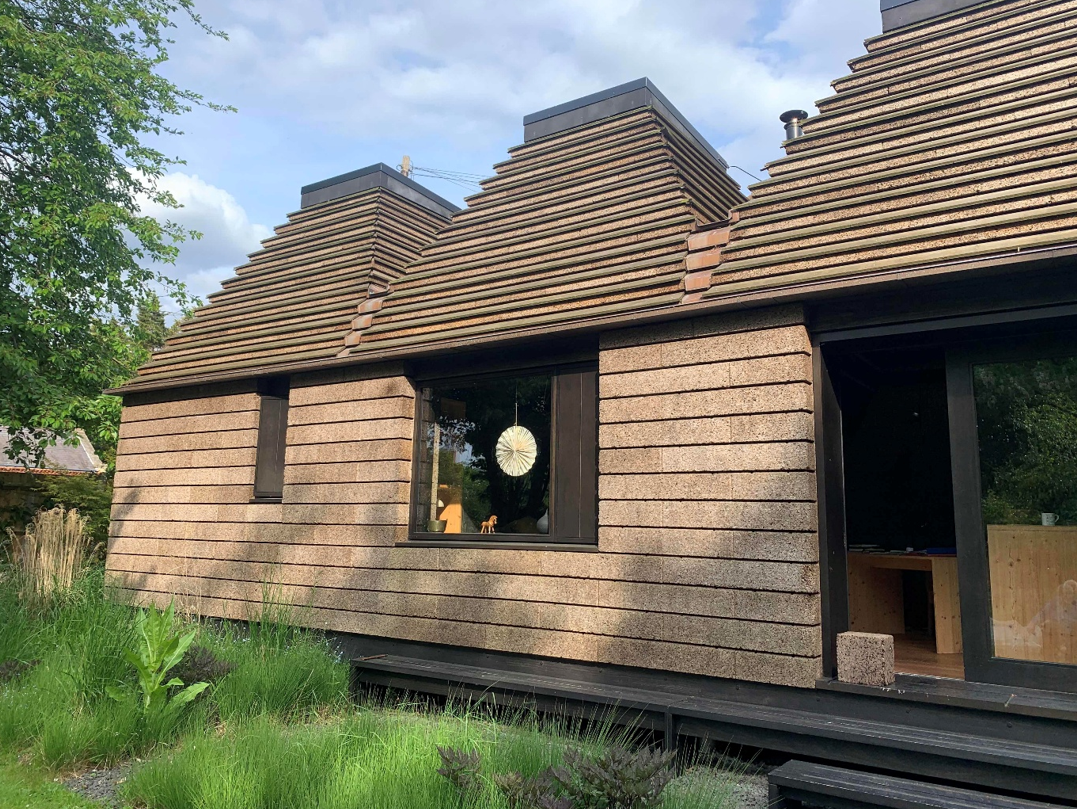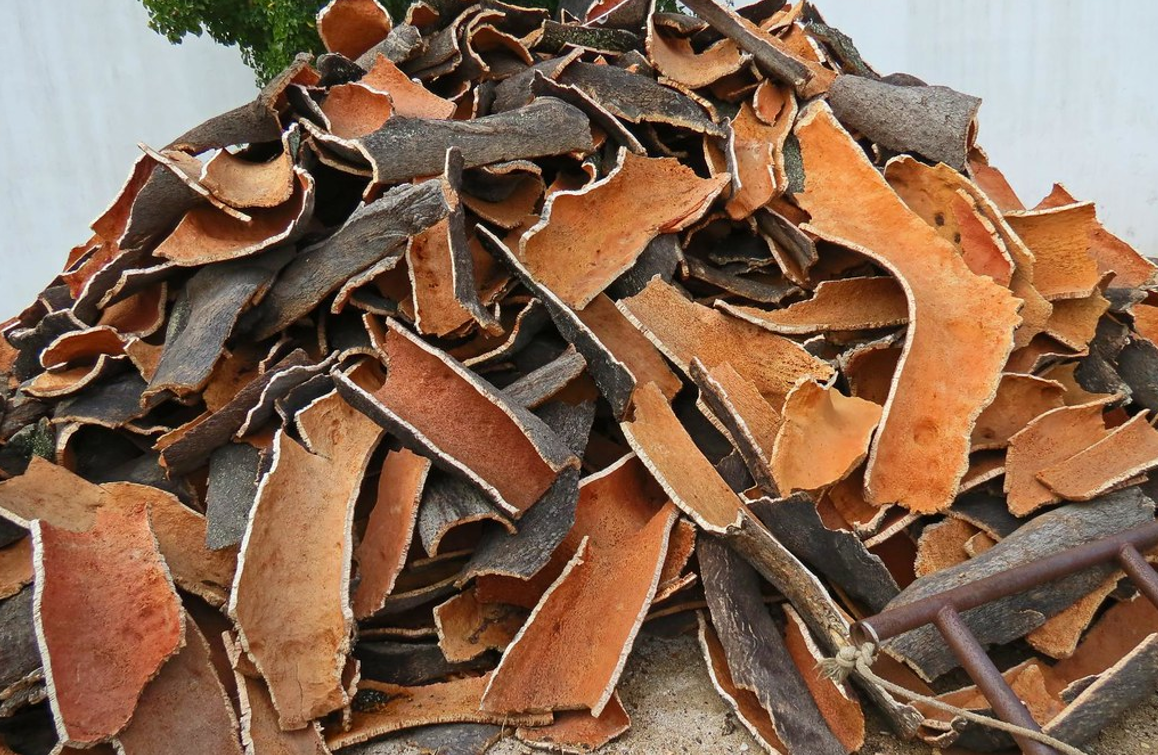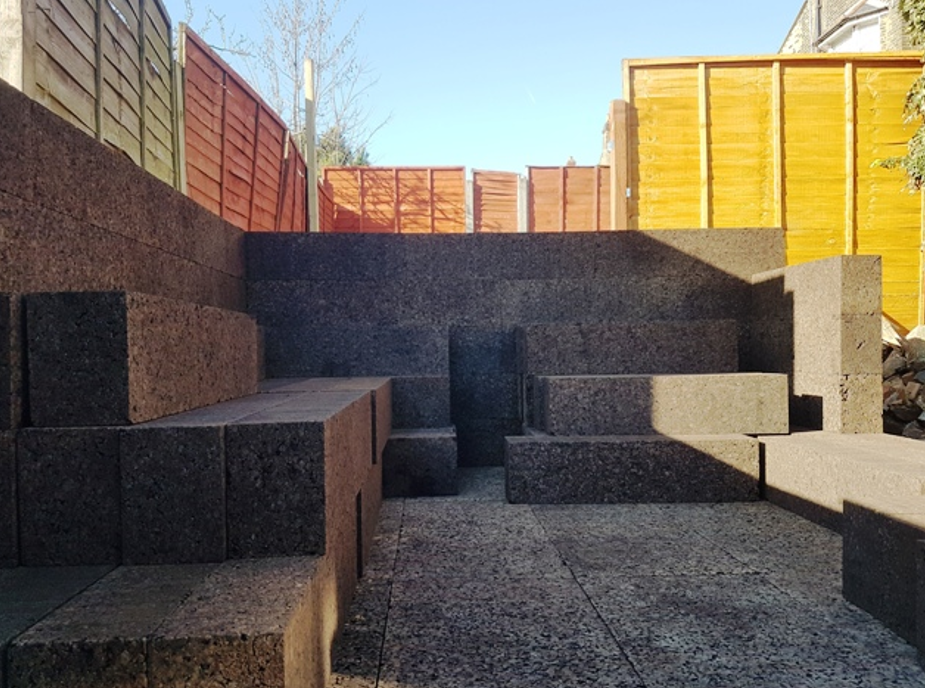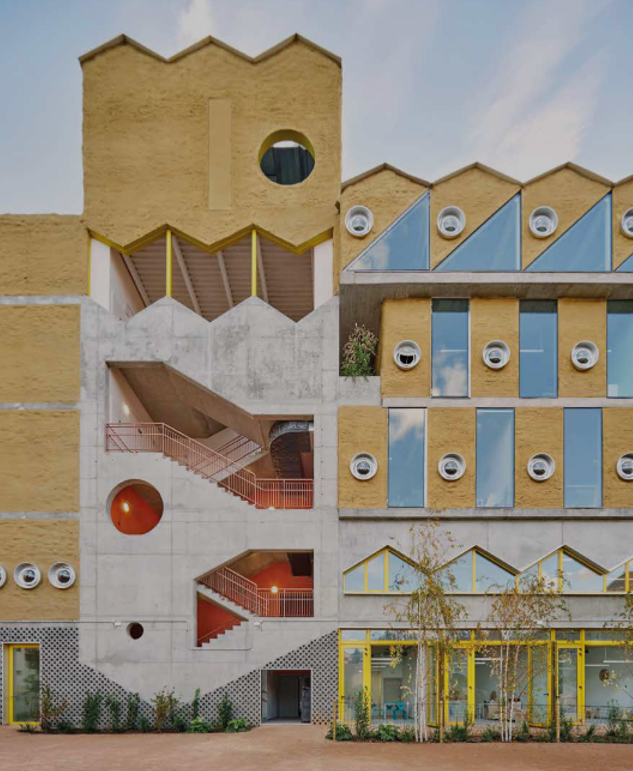Cork
Cork is one of the most unique and newest renewable materials coming to light in contemporary architecture. With very few current precedent examples of its use, cork is a material that has many special properties creating a unique atmosphere in which to dwell; a notion that today’s blog will explore.
Photo of Eton Cork House taken by myself
To learn more, I visited the Eton Cork House, a paradigm example for the modern use of cork. I was fortunate enough to speak to Matthew Barnett Howland, architect from CSK architects and lecturer at UCL Bartlett who kindly gave me a tour of his design in Eton. Whilst there, I was also able to take my own photographs, some of which feature in this blog.
The Eton Cork House provides a dwelling for a couple in Eton during the summer months and is located within the garden grounds of a grade II listed mill by the Thames river which divides Eton and Windsor. Features within the building include: a bedroom; kitchen and office workspace, all consisting of complementary timber components. To address fire safety concerns, copper tubing has been implemented as water sprinklers. I like how they have been added externally and are shown off as a component of the building, with their chestnut colour accentuating the warm tones of the cork woods, creating a comforting atmosphere.
Stripped Cork Oak Bark. (2025, October19). Flickr; Stripped Cork Oak Bark | Flickr. https://www.flickr.com/photos/12496504@N06/8234135749
Properties of cork include: having a soft sponge like texture; being a strong thermal insulator; and being a reasonably cheap material to harvest and farm. Cork trees grow in England and can have their cork bark material removed without damaging the tree, leaving it to continue growing and regrow its cork surrounding shell. There are also some current weaknesses of cork material in this early conception phase, cork can be susceptible to bad weather and may degrade quicker overtime compared to other suitable materials for a summer pavilion. The material is raised slightly off the ground so that raindrops do not splash and impact the foundations of the cork. Cork also has a ‘poor spread of flame’ rating contrary to similar renewable materials, such as straw. Interestingly, Matthew Barnett explained “In order to maintain the purity of the cork over whole-life we did not want to cover it in fire retardants – and it is not possible to pressure-impregnate expanded cork with retardant, so an exposed sprinkler system allowed them to meet regulations.”
Image of Cork blocks Credit: Studio Bark
Despite these limitations, Isabel Mirranda and Helana Pereira describe some of the most special properties of cork stating “Cork is a green competitive material for various engineering and design applications due to its biological formation, sustainable production and a portfolio of properties including low density, impermeability, viscoelastic behaviour and high thermal insulation that derive from its cellular and chemical features” ( Miranda and Pereira (2024) and final depiction of the uses of cork can be seen from The Colegio Reggio, North East of Madrid featuring a thick layer of yellow cork which is described as providing generous natural insulation and can also serve as a habitat, in the future, for fungi, plants and animals. (Fernández-Galiano, Miguel, 2025)
Despite this, the Eton Cork House has been a feat of engineering and architecture, with the design being awarded many prestigious titles and being shortlisted for the RIBA Stirling prize in 2019. The plant based construction is also carbon negative at completion and is dry-jointed featuring no mortar, glue or adhesive; keeping the blocks of cork together. Instead, blocks can be easily assembled by hand, creating what Arch Daily (2020) describe as an “Oversized organic Lego system”. This will also mean that disassembly will be simple and that blocks of cork can be repurposed easily.
Jose Hevia Fotografia The Colegio Reggio, September 2022



